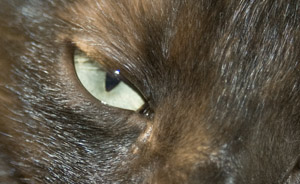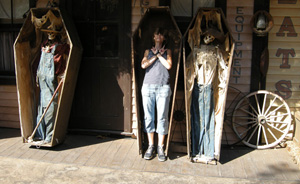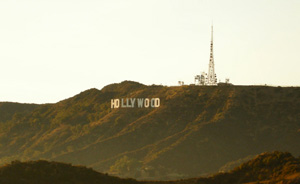Monday 9 December 2013
Research on open sequences
In this opening sequence the first thing we are made to focused on is the daughter as it shows clips of her from when she was young this shows us that the story may be focused around her then it goes onto also focus the dad so its easy to tell who the main characters are and what the story is going to be about. The credits are all put into the opening but this time are not as bold. However It only shows the main characters name "liam neeson" and the production companies because of it only showing one actors name we immediately know that the film is going to be based around him and the other actors name didn't appear we are made to think that they are less relevant.
In this opening sequence we are first shown the production companies this is a big part of the opening sequence and of the film itself. The opening sequence has music in the background to show the genre, this music gives a feel that the film is going to be explosive. we then get to know and think that the film is an action film. The credits are bold and well noticeable and quick with no other main distractions to fit in with the style of the film, we are then shown batman's mask this tells us who the story is based on.
This is the opening sequence for step up 3, the first thing we see is the title if the film this immediately tells the viewers what they are watching/what the film is called. The music and the set up of the opening gives us information of the genre of the film as it is all high beat hip hop music with street dance we begin to think that it is a film set in 2013. The bright and vibrant colours used suggest that the film is going to be very lively and bright. However in this opening there is now credits this means that the viewers may have no clue who is in the film.
Sunday 13 October 2013
The Film Making Business:
1.The Idea- Someone comes up with an idea.
2.Development Finance- The rough idea is
turned into a final script ready for production.
3.Script Development- The finished script
is delivered to the producer and financiers.
4.Packaging- The director and producer
decide how they want to film it and who will help them.
5.Financing- The producer secures enough
funding so that the film is made to the highest possible standard.
6.Pre-Production- The full cast and crew
are hired. Detailed preparations for the shoot begins.
7.The Shoot- The film is being shot.
8.Post Production- Usually starts during
the shoot. As soon as the first 'RUSHES'- raw footage and sound are
available.
9.Sales- The producer finds a
distributor.
10.
Marketing- The distributors plan their strategy and begin to market it.
Production
The process in which the film is made. The film goes through script writing, casing, shooting and editing in this stage so
it's ready for screening. This process is the main part of the film making. This can take from months to years
Pre-Production
The designing of the film and the preparation towards it. This includes script writing, prop gathering and location
finding. All these things help towards the film making so they have everything ready in advance.
Post-Production
The editing of the film, the final stage in the making of the film so it may then go on to be advertised. The post-
production is what makes the film "bearable to watch" by adding cuts,effects and adding the scenes together. Usually
the editing is the most important part of the film as it helps string the scenes together and decide what scenes to use and
what clips they don't want in the film.
Distribution
This is when the target audience is determined, as the film is taken into the final stage of development it is advertised to
the audience and ready to be sold to stores and sold to the customers/consumers.they do this by using advertising.
Types of distribution include:
-Social networking adverts such as Facebook, twitter and Skype
-posters and billboards
-trailers or movie stills
-social networking pages
-websites
-merchandise
-radio
Exhibition
The final stage in the whole of the film making, the film is shown to the target audience and the red carpet event, when
the actors and directors walk down the carpet to receive awards and recognition for the film they helped to
make.this is a public event used to show off the actors and host the premier of the movie.
Wednesday 11 September 2013
Aerial Shot
An exciting variation of a crane shot, usually taken from a helicopter. This is often used at the beginning of a film, in order to establish setting and movement.
pan
A movement which scans a scene horizontally. The camera is placed on a tripod, which operates as a stationary axis point as the camera is turned, often to follow a moving object which is kept in the middle of the frame.
example:
Extreme close up:

The extreme version of the close up, generally magnifying beyond what the human eye would experience in reality. An extreme close-up of a face, for instance, would show only the mouth or eyes, with no background detail whatsoever. This is a very artificial shot, and can be used for dramatic effect.
close up:

This shows very little background, and concentrates on either a face, or a specific detail of mise en scène. Everything else is just a blur in the background. This shot magnifies the object and shows the importance of things. The close-up takes us into the mind of a character. In reality, we only let people that we really trust get that close to our face - mothers, children and lovers, usually - so a close up of a face is a very intimate shot. A film-maker may use this to make us feel extra comfortable or extremely uncomfortable about a character.
Medium shot:

Contains a figure from the knees/waist up and is normally used for dialogue scenes, or to show some detail of action.
Long Shot:

long shot shows the image as approximately "life" size ie corresponding to the real distance between the audience and the screen in a cinema (the figure of a man would appear as six feet tall).FULL SHOT showing the entire human body, with the head near the top of the frame and the feet near the bottom. While the focus is on characters, plenty of background detail still emerges: we can tell the coffins on the right are in a Western-style setting, for instance.
Extreme long shot:

This can be taken from as much as a quarter of a mile away, and is generally used as a scene-setting, establishing shot. It normally shows an ecterior, eg the outside of a building, or a landscape, and is often used to show scenes of thrilling action eg in a war film or disaster movie. There will be very little detail visible in the shot, it's meant to give a general impression rather than specific information.
The extreme long shot on the left is taken from a distance, but denotes a precise location - it might even connote all of the entertainment industry if used as the opening shot in a news story.
Tuesday 10 September 2013
Subscribe to:
Posts (Atom)